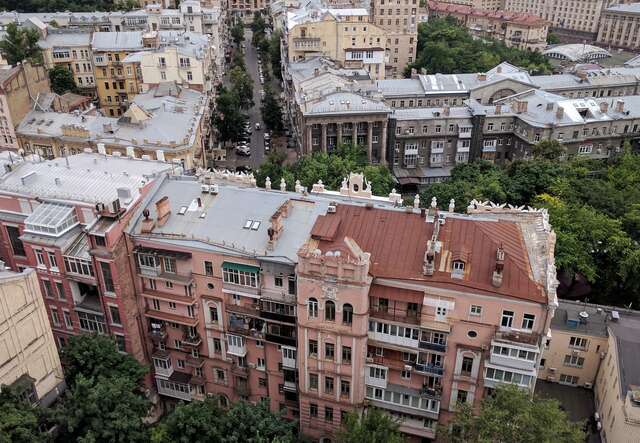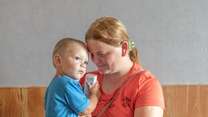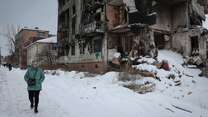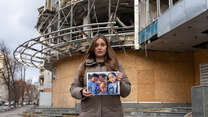
Learn more about Ukraine, a consistent name in the news since its full-scale invasion by Russia in 2022.
1. The crossroads of Eastern Europe
Perched atop the Black Sea, Ukraine (“borderland”) is the second-largest country in Europe after Russia, covering more than 230,000 square miles. It is bordered by Russia to the east, Belarus to the north, Poland, Slovakia, and Hungary to the west, and Romania and Moldova to the southwest.
2. The Ukrainian people
Ukraine’s population is estimated at about 39 million as of late 2025, a marked decline in its pre-war estimate of 41 million. The majority are ethnic Ukrainians, but there are also sizable other populations, such as Moldovan or Bulgarian. The country is majority Christian, with up to two-thirds of Ukrainians identifying as Orthodox.

3. Ancient history
The lands that make up modern Ukraine were once home to early civilizations such as the nomadic Scythians and Sarmatians. In the ninth century, the medieval state of Kyivan Rus’ emerged, with Kyiv as its capital. This first East Slavic state played a central role in the spread of Orthodox Christianity and Slavic culture.
4. Independence
Ukraine declared independence on August 24, 1991, following the collapse of the Soviet Union. A national referendum in December 1991 confirmed overwhelming support for sovereignty, with more than 90 percent of Ukrainians supporting independence. The new nation sought to balance its Soviet legacy with aspirations for democracy and closer ties to Europe.

5. Post-independence
Since independence, Ukraine has faced challenges with political corruption, economic restructuring, and internal divisions between its eastern and western regions. Key events included the 2004 Orange Revolution, sparked by a contested presidential election, and the 2014 Revolution of Dignity (Euromaidan), which set Ukraine on a more decisively pro-European path.
6. Decade of Conflict
Tensions between Russia and Ukraine escalated after Russia’s annexation of Crimea (internationally recognized as part of Ukraine) in 2014 and its support for separatists in eastern Ukraine’s Donbas region. The Donetsk and Luhansk areas first witnessed violence and destruction in 2014, but as swiftly as the war erupted in April 2014, it abruptly disappeared from the headlines. The conflict simmered until February 2022, when Russia launched a full-scale invasion of UkraineThe invasion marked Europe’s largest armed conflict since World War II.

7. War's progression
The war has shifted in phases: Russia’s initial push toward Kyiv failed, but heavy fighting has continued in the east and south, with Ukraine regaining some territory in counteroffensives but also suffering devastating attacks on cities and infrastructure. As of mid-2025, the frontlines remain largely in eastern Ukraine, and the armed conflict is ongoing. Civilian casualties have surged dramatically in 2025 — from January to October, deaths and injuries were up by 27% compared to the same period last year, already exceeding the total for all of 2024. According to the UN’s Human Rights Monitoring Mission, over 14,500 civilians have been killed to date.
8. A displacement crisis
The war has created one of the world’s largest displacement crises in recent decades. As of April 2025, 6.35 million Ukrainian refugees have been recorded across Europe, with total global displacement estimated closer to 6.8–6.9 million. In addition, around 3.7–3.8 million people remain internally displaced within Ukraine. Most refugees have found shelter in neighboring countries such as Poland and Germany.Thousands of Ukrainians are still being forced from their homes by relentless shelling and advancing fighting.

9. Life in a war zone
Normal life in Ukraine no longer exists. Millions have lost their homes to bombings, and airstrikes continue to damage hospitals, schools, and other parts of civilian infrastructure, cutting off essential services like electricity and water. More than 12.5 million people are in urgent need of humanitarian assistance.
The International Rescue Committee (IRC) has been on the ground in Ukraine since 2022, delivering critical medical care supplies, financial and material assistance, and offering support services for women and children.
As the war persists, financial insecurity, health support, and safety remain the top concerns for those affected.
How is the IRC supporting people in Ukraine?
The IRC is on the ground delivering critical support to those on the frontlines and displaced across Europe.
Inside Ukraine, the IRC is focusing its assistance in areas most heavily affected by the war, particularly in the east and southeast of Ukraine.
From the start of the escalation until January 2025, the IRC in Ukraine supported almost 150,000 people, with over 33,000 clients benefiting from primary healthcare provided by our mobile clinics and doctors, over 22000 people receiving financial assistance and 10,000 children receiving psychological support
Working alongside local partners, our teams have provided financial assistance to nearly 130,000 people and distributed critical items to over 30,000 individuals. Furthermore, 60,000 women and girls have accessed vital IRC services, and our teams have organized 30,000 sessions for children, helping them reclaim a sense of childhood and begin to heal from the devastating effects of war.
More from the IRC
The International Rescue Committee has over 90 years of experience helping people affected by crisis in more than 40 countries to survive, recover and rebuild their lives. We also help refugees and displaced people resettle and integrate into new communities in the U.S. and across Europe.
Our ratings: We consistently earn top marks from charity watchdog groups for our efficient use of donor contributions and the effectiveness of our work.
Get connected: Follow the IRC on Instagram, LinkedIn, Facebook, Bluesky and X.
Stay informed: Learn more about the world’s most pressing crises and what the IRC is doing to help.




